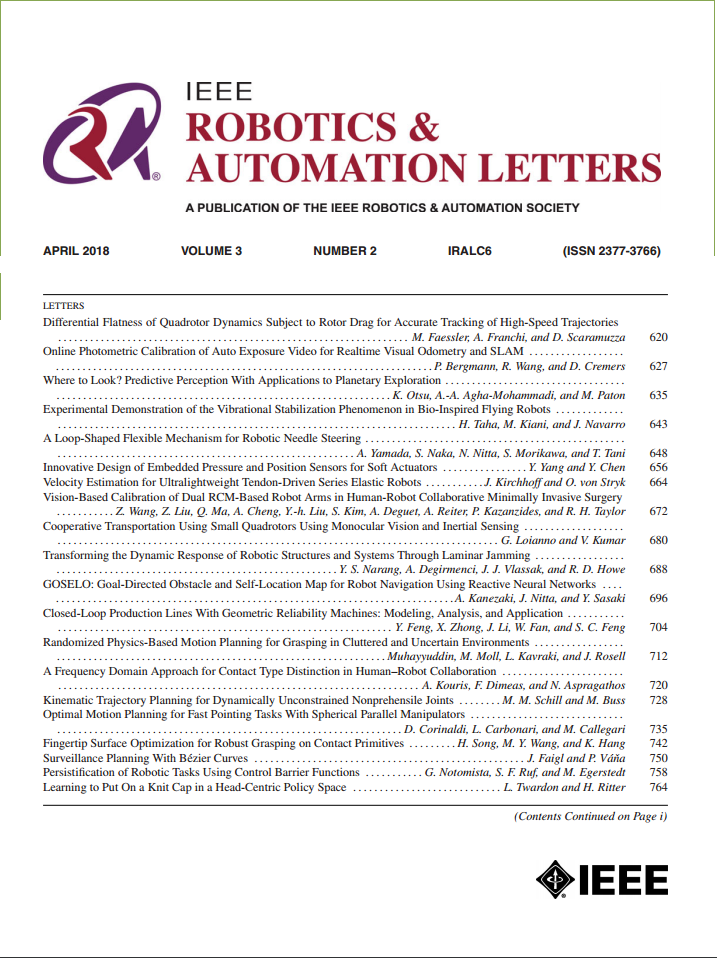用于扭拉驱动器的电活性扭带
IF 5.3
2区 计算机科学
Q2 ROBOTICS
引用次数: 0
摘要
静电软执行器以其高功率,快速响应和可访问控制而闻名。在静电执行器中实现了多种操作方式;然而,扭转运动仍然特别具有挑战性,很少被研究。这封信采用介电泳液体压缩(DLZ)驱动原理来开发一个兼容的扭转机构。执行器使用预扭带,以实现扭转变形与轴向收缩时,受到静电压缩力。研究了几何设计、载荷约束和输入电压等关键参数对执行器扭转旋转和轴向收缩时位移和力的影响。通过选择材料,如条带的长度和厚度,并控制施加的电压,执行器的行为可以调整为一系列理想的收缩和扭转,最大化一种驱动模式,同时最小化另一种驱动模式。此外,还研究了不同电压波形和频率下执行器的动态响应。本研究扩展了基于DLZ驱动系统的静电驱动器的设计能力,用于多模态柔性驱动,在需要扭转和轴向力的操作和更广泛的机器人应用中具有潜在的用途。本文章由计算机程序翻译,如有差异,请以英文原文为准。
Electroactive Twisted Ribbon for Torsional Zipping Actuator
Electrostatic soft actuators are known for their high power, rapid response, and accessible control. A variety of operational modalities have been achieved in electrostatic actuators; however, torsional movement remains particularly challenging and has been rarely investigated. This letter employs the dielectrophoretic liquid zipping (DLZ) actuation principle to develop a compliant torsional mechanism. The actuator uses pre-twisted ribbons to achieve torsional deformation with axial contraction when subjected to an electrostatic zipping force. The effects of key parameters, including geometric design, loading constraints, and input voltage, are studied to improve the actuator's performance, including both displacement and force in torsional rotation and axial contraction. By selecting materials such as the length and thickness of the ribbons and controlling the applied voltage, the actuator's behaviour can be tuned for a range of desirable contractions and torsion, maximising one mode of actuation while minimising the other. Additionally, the dynamic response of the actuator under different voltage waveforms and frequencies is investigated. This study extends the design capabilities of electrostatic actuators based on DLZ actuation systems for multi-modal compliant actuation, with potential uses in manipulation and wider robotic applications requiring torsional and axial force.
求助全文
通过发布文献求助,成功后即可免费获取论文全文。
去求助
来源期刊

IEEE Robotics and Automation Letters
Computer Science-Computer Science Applications
CiteScore
9.60
自引率
15.40%
发文量
1428
期刊介绍:
The scope of this journal is to publish peer-reviewed articles that provide a timely and concise account of innovative research ideas and application results, reporting significant theoretical findings and application case studies in areas of robotics and automation.
 求助内容:
求助内容: 应助结果提醒方式:
应助结果提醒方式:


